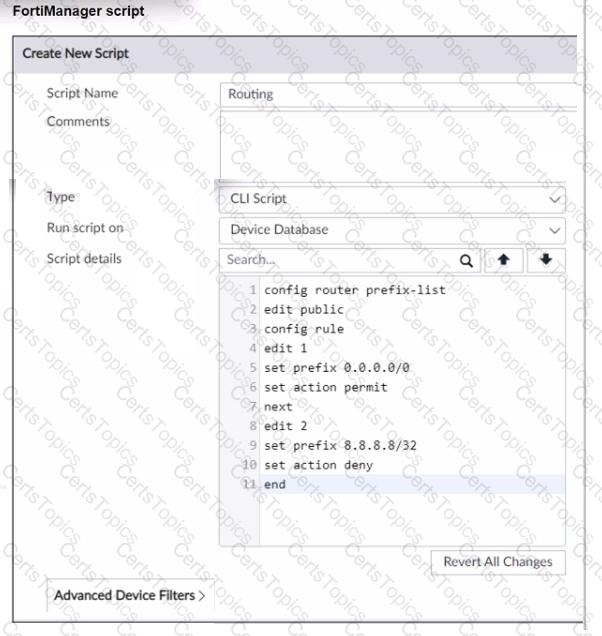Refer to the exhibit.

Which two results occur if the script is run using the Device Database option? (Choose two.)
When an installation is performed from FortiManager, what is the recovery logic used between FortiManager and FortiGate for an FGFM tunnel?
An administrator enabled workspace mode and now wants to delete an address object that is currently referenced in a firewall policy. Which two results can the administrator expect? (Choose two.)
Refer to the exhibit.

A service provider administrator has assigned a global policy package to a managed customer ADOM namedMy_ADOM, which has four policy packages. The customer administrator has access only toMy_ADOM.
How can the customer or service provider administrators remove the global header policy from the policy package namedShared_Package?